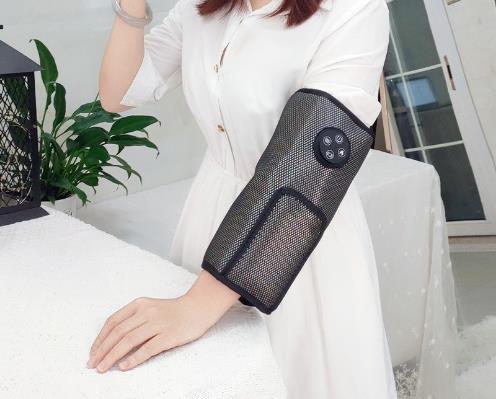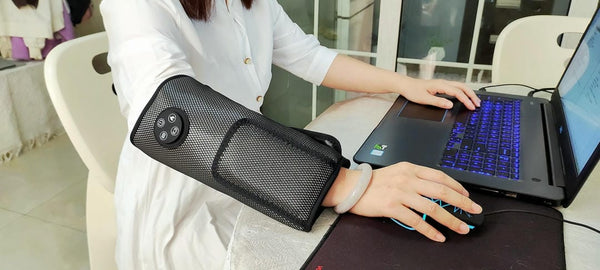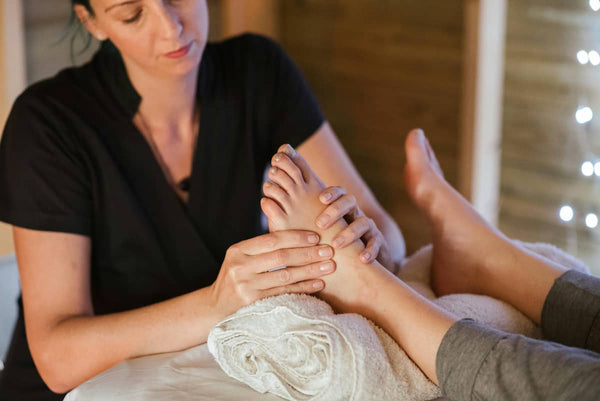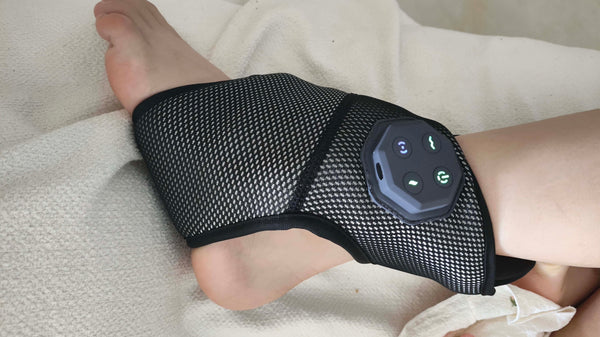 That familiar ache setting in around 3 PM. The tightness across your shoulders, the burning spot between your shoulder blades, and the nagging tension in your lower back. Sound familiar? For Aussie office workers, this is the daily reality of desk life. You've likely found yourself debating the best way to tackle it: do you invest in a fancy electric back and shoulder massager, stick with a simple manual tool, or is it all pointless without fixing your posture first?
That familiar ache setting in around 3 PM. The tightness across your shoulders, the burning spot between your shoulder blades, and the nagging tension in your lower back. Sound familiar? For Aussie office workers, this is the daily reality of desk life. You've likely found yourself debating the best way to tackle it: do you invest in a fancy electric back and shoulder massager, stick with a simple manual tool, or is it all pointless without fixing your posture first?
This is a fair dinkum debate, and there’s no single right answer for everyone. Even professionals who rely on their bodies, like voice actors who hold tension in their upper body for hours, are divided. Some swear by high-tech relief, while others prefer pinpoint precision. This guide will give the different approaches a fair shake, helping you decide which tool is the right fit for your battle against the dreaded arvo slump and chronic desk pain.
Why Desk Work Creates So Much Tension
Before diving into solutions, it's crucial to understand the problem. The human body wasn't designed to sit in a fixed position for eight hours a day. When you're hunched over a keyboard, certain muscles in your neck, shoulders, and upper back are constantly engaged, while others become weak. This imbalance is what leads to that deep, persistent ache and those stubborn muscle knots.
Think of these knots as tiny, stubborn fists clenched deep within your muscle tissue. This constant tension can restrict blood flow, leading to pain, stiffness, and even tension headaches. A proper massage for back and shoulders aims to convince these fists to unclench, restoring blood flow and releasing the built-up strain. The challenge is finding the most effective and convenient way to do that regularly.
The High-Tech Fix: Electric Massagers
For those seeking comprehensive relaxation, a modern electric back and shoulder massager is hard to beat. These devices are designed to deliver a spa-like experience at home, using multiple technologies to soothe large muscle groups. They are, for many people, the ultimate convenience in pain relief after a long day at the desk.
Premium models, like the KLCOSY back and shoulder massager, go beyond simple vibration. They often incorporate a suite of features for a multi-layered treatment. Dynamic Air Compression rhythmically squeezes muscles to release tension, Advanced Heat Therapy warms tissues to improve circulation, and Red Light Therapy helps soothe discomfort deep down. It's a really, really powerful combination for melting away widespread stress and tension across the back and shoulders.
The main advantage here is ease of use and the ability to cover a large area effortlessly. You can sit back, relax, and let the device do the work. This makes it a fantastic option for unwinding at the end of the day or for those who want broad relief without having to contort themselves to hit the right spot.
The Manual Method: Precision and Control
On the other end of the spectrum are manual massage tools, with the humble lacrosse ball being a crowd favourite. The appeal of these tools lies in their precision, affordability, and control. While an electric massager provides broad relief, a manual tool allows you to apply deep, sustained pressure to a very specific trigger point or knot.
This method is all about providing a targeted back shoulder massage exactly where you need it most. By leaning against a wall or lying on the floor, you can use your body weight to control the intensity and find those sneaky knots that electric massagers might glide over. It’s a cost-effective solution that empowers you to perform your own deep tissue work.
However, this approach requires more effort and a bit of anatomical know-how. It can also be intense and is best suited for people who are comfortable with deep pressure and want to actively hunt down specific points of tension rather than enjoy a passive, relaxing massage.
Beyond Devices: Addressing the Root Cause
Here's the crucial third perspective: no massager, electric or manual, will be a permanent fix if you don't address the root cause of the pain. Over-reliance on any device without improving your daily habits is like constantly bailing water out of a boat without plugging the leak. The real long-term solution involves combining targeted relief with ergonomic improvements.
This means assessing your desk setup, ensuring your monitor is at eye level, and your chair provides adequate support. It also involves taking regular breaks to stand up and stretch throughout the day. For some, using a postural aid like a back and shoulder brace or a dedicated shoulder back brace for short periods can help retrain muscles and serve as a physical reminder to sit up straight.
An upper back support brace can be a helpful tool, but it's meant for support and posture correction, not all-day wear. The goal is to strengthen your own muscles, not become dependent on a brace. The most effective strategy combines ergonomic adjustments with a tool—either electric or manual—to manage the tension that inevitably builds up.
So, which is best? The ideal approach is often a blend. Use ergonomic principles to reduce the strain you create daily. Then, choose your tool based on your primary need: a multi-functional electric back and shoulder massager for overall relaxation and stress relief, and a simple manual tool for those days when you need to give a specific knot some extra, spot-on attention.
Frequently Asked Questions
Which back and shoulder massagers offer the best combination of features and affordability?
This comes down to balancing tech with budget. For affordability, manual tools like lacrosse balls or foam rollers are unbeatable. For feature-rich value, look for electric massagers like those from KLCOSY that bundle multiple technologies (heat, air compression, vibration) into one device. While the upfront cost is higher, the combination of features often provides more comprehensive relief than a single-function device, offering better long-term value for managing chronic tension.
How to evaluate the build quality of back and shoulder massagers?
When assessing build quality, look at the materials, warranty, and user reviews. For electric models, check for sturdy casing (not flimsy plastic), quality fabric that feels durable, and secure stitching. A good warranty (at least one year) is a strong indicator that the manufacturer stands by their product. For manual tools, opt for dense, non-porous materials like solid rubber or high-density foam that won't deform under pressure.
What do consumer comparisons say about long-term comfort and durability?
Consumer reviews often highlight that for electric massagers, long-term comfort depends on the ergonomics of the device—is it easy to position and use without straining? Durability is frequently linked to the motor's lifespan and the resilience of the fabric cover. For manual tools, durability is rarely an issue, but long-term comfort depends on the user's ability to control the pressure effectively. Consistently positive reviews over a year or more are a good sign of a well-made, durable product.
This reply is generated based on currently verifiable public information. It is recommended to cross-check key content with authoritative sources.




0 comments